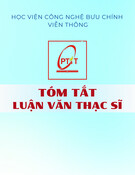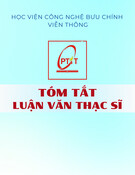
Annals of Mathematics
Nonconventional
ergodic averages and
nilmanifolds
By Bernard Host and Bryna Kra

Annals of Mathematics,161 (2005), 397–488
Nonconventional ergodic averages
and nilmanifolds
By Bernard Host and Bryna Kra
Abstract
We study the L2-convergence of two types of ergodic averages. The first
is the average of a product of functions evaluated at return times along arith-
metic progressions, such as the expressions appearing in Furstenberg’s proof
of Szemer´edi’s theorem. The second average is taken along cubes whose sizes
tend to +∞. For each average, we show that it is sufficient to prove the conver-
gence for special systems, the characteristic factors. We build these factors in
a general way, independent of the type of the average. To each of these factors
we associate a natural group of transformations and give them the structure of
a nilmanifold. From the second convergence result we derive a combinatorial
interpretation for the arithmetic structure inside a set of integers of positive
upper density.
1. Introduction
1.1. The averages. A beautiful result in combinatorial number theory is
Szemer´edi’s theorem, which states that a set of integers with positive upper
density contains arithmetic progressions of arbitrary length. Furstenberg [F77]
proved Szemer´edi’s theorem via an ergodic theorem:
Theorem (Furstenberg). Let (X, X,µ,T)be a measure-preserving prob-
ability system and let A∈Xbe a set of positive measure. Then for every
integer k≥1,
lim inf
N→∞
1
N
N
n=1
µA∩T−nA∩T−2nA∩···∩T−knA>0.
It is natural to ask about the convergence of these averages, and more gen-
erally about the convergence in L2(µ) of the averages of products of bounded
functions along an arithmetic progression of length kfor an arbitrary integer
k≥1. We prove:

398 BERNARD HOST AND BRYNA KRA
Theorem 1.1. Let (X, X,µ,T)be an invertible measure-preserving prob-
ability system,k≥1be an integer,and let fj,1≤j≤k,be kbounded
measurable functions on X. Then
lim
N→∞
1
N
N−1
n=0
f1(Tnx)f2(T2nx)...f
k(Tknx)(1)
exists in L2(X).
The case k= 1 is the standard ergodic theorem of von Neumann. Fursten-
berg [F77] proved this for k= 2 by reducing to the case where Xis an ergodic
rotation and using the Fourier transform to prove convergence. The existence
of limits for k= 3 with an added hypothesis that the system is totally ergodic
was shown by Conze and Lesigne in a series of papers ([CL84], [CL87] and
[CL88]) and in the general case by Host and Kra [HK01]. Ziegler [Zie02b] has
shown the existence in a special case when k=4.
If one assumes that Tis weakly mixing, Furstenberg [F77] proved that for
every kthe limit (1) exists and is constant. However, without the assumption
of weak mixing one can easily show that the limit need not be constant and
proving convergence becomes much more difficult. Nonconventional averages
are those for which even if the system is ergodic, the limit is not necessarily
constant. This is the case for k≥3 in Equation (1).
Some related convergence problems have also been studied by Bourgain
[Bo89] and Furstenberg and Weiss [FW96].
We also study the related average of the product of 2k−1 functions taken
along combinatorial cubes whose sizes tend to +∞. The general formulation of
the theorem is a bit intricate and so for clarity we begin by stating a particular
case, which was proven in [HK04].
Theorem.Let (X, X,µ,T)be an invertible measure-preserving probabil-
ity system and let fj,1≤j≤7, be seven bounded measurable functions on X.
Then the averages over (m, n, p)∈[M,M′]×[N,N′]×[P, P ′]of
f1(Tmx)f2(Tnx)f3(Tm+nx)f4(Tpx)f5(Tm+px)f6(Tn+px)f7(Tm+n+px)
converge in L2(µ)as M′−M,N′−Nand P′−Ptend to +∞.
Notation. For an integer k>0, let Vk={0,1}k. The elements of Vk
are written without commas or parentheses. For ε=ε1ε2...ε
k∈Vkand
n=(n1,n
2,...,n
k)∈Zk, we write
ε·n=ε1n1+ε2n2+···+εknk.
We use 0to denote the element 00 ...0ofVkand set V∗
k=Vk\{0}.
We generalize the above theorem to higher dimensions and show:

NONCONVENTIONAL ERGODIC AVERAGES AND NILMANIFOLDS 399
Theorem 1.2. Let (X, X,µ,T)be an invertible measure-preserving prob-
ability system,k≥1be an integer,and let fε,ε∈V∗
k,be 2k−1bounded
functions on X. Then the averages
k
i=1
1
Ni−Mi·
n∈[M1,N1)×···×[Mk,Nk)
ε∈V∗
k
fε(Tε·nx)(2)
converge in L2(X)as N1−M1,N
2−M2,... ,N
k−Mktend to +∞.
When restricting Theorem 1.2 to the indicator function of a measurable
set, we have the following lower bound for these averages:
Theorem 1.3. Let (X, X,µ,T)be an invertible measure-preserving prob-
ability system and let A∈X. Then the limit of the averages
k
i=1
1
Ni−Mi·
n∈[M1,N1)×···×[Mk,Nk)
µ
ε∈Vk
Tε·nA
exists and is greater than or equal to µ(A)2kwhen N1−M1,N
2−M2,... ,
Nk−Mktend to +∞.
For k= 1, Khintchine [K34] proved the existence of the limit along with
the associated lower bound, for k= 2 this was proven by Bergelson [Be00],
and for k= 3 by the authors in [HK04].
1.2. Combinatorial interpretation. We recall that the upper density d(A)
of a set A⊂Nis defined to be
d(A) = lim sup
N→∞
1
N|A∩{1,2,... ,N}| .
Furstenberg’s theorem as well as Theorem 1.3 have combinatorial interpreta-
tions for subsets of Nwith positive upper density. Furstenberg’s theorem is
equivalent to Szemer´edi’s theorem. In order to state the combinatorial coun-
terpart of Theorem 1.3 we recall the definition of a syndetic set.
Definition 1.4. Let Γ be an abelian group. A subset EofΓissyndetic if
there exists a finite subset Dof Γ such that E+D=Γ.
When Γ = Zd, this definition becomes: A subset Eof Zdis syndetic if
there exist an integer N>0 such that
E∩[M1,M
1+N]×[M2,M
2+N]×···×[Mk,M
k+N]=∅
for every M1,M
2,...,M
k∈Z.
When Ais a subset of Zand mis an integer, we let A+mdenote the set
{a+m:a∈A}. From Theorem 1.3 we have:

400 BERNARD HOST AND BRYNA KRA
Theorem 1.5. Let A⊂Zwith d(A)>δ>0and let k≥1be an integer.
The set of n=(n1,n
2,...,n
k)∈Zkso that
d
ε∈Vk
(A+ε·n)≥δ2k
is syndetic.
Both the averages along arithmetic progressions and along cubes are con-
cerned with demonstrating the existence of some arithmetic structure inside
a set of positive upper density. Moreover, an arithmetic progression can be
seen inside a cube with all indices njequal. However, the end result is rather
different. In Theorem 1.5, we have an explicit lower bound that is optimal, but
it is impossible to have any control over the size of the syndetic constant, as
can be seen with elementary examples such as rotations. This means that this
result does not have a finite version. On the other hand, Szemer´edi’s theorem
can be expressed in purely finite terms, but the problem of finding the optimal
lower bound is open.
1.3. Characteristic factors. The method of characteristic factors is classi-
cal since Furstenberg’s work [F77], even though this term only appeared explic-
itly more recently [FW96]. For the problems we consider, this method consists
in finding an appropriate factor of the given system, referred to as the char-
acteristic factor, so that the limit behavior of the averages remains unchanged
when each function is replaced by its conditional expectation on this factor.
Then it suffices to prove the convergence when this factor is substituted for the
original system, which is facilitated when the factor has a “simple” description.
We follow this general strategy, with the difference that we focus more on
the procedure of building characteristic factors than on the particular type of
average currently under study. A standard method for finding characteristic
factors is an iterated use of the van der Corput lemma, with the number of
steps increasing with the complexity of the averages. For each system and
each integer k, we build a factor in a way that reflects ksuccessive uses of the
van der Corput lemma. This factor is almost automatically characteristic for
averages of the same “complexity”. For example, the k-dimensional average
along cubes has the same characteristic factor as the average along arithmetic
progressions of length k−1. Our construction involves the definition of a “cubic
structure” of order kon the system (see Section 3), meaning a measure on its
2kth Cartesian power. Roughly speaking, the factor we build is the smallest
possible factor with this structure (see Section 4).
The bulk of the paper (Sections 5–10), and also the most technical por-
tion, is devoted to the description of these factors. The initial idea is natural:
For each of these factors we associate the group of transformations which pre-
serve the natural cubic structure alluded to above (Section 5). This group is


























